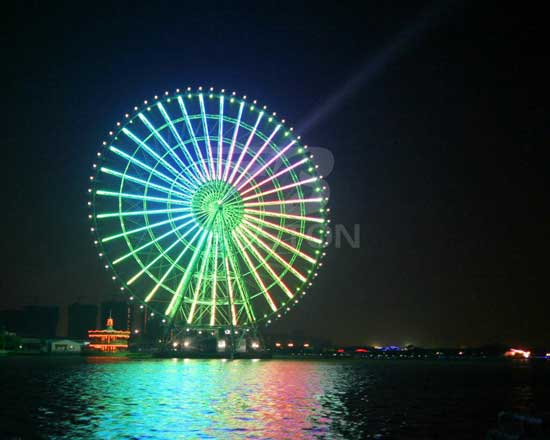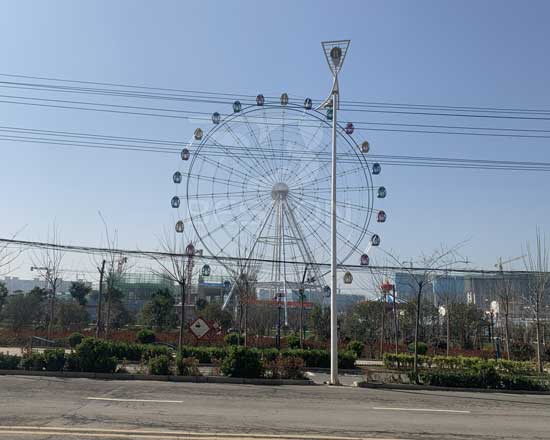To better understand the workings of a Ferris wheel, it would be wise to first understand what it is and its origin. Therefore, what is a Ferris wheel?
The Ferris wheel is defining as a large nonbuilding structure that rotated at a central axis. Sits are then added to the outer wheel or rim and they always hang downwards. It is a popular fun machine and is mainly found in funfairs, circus, trade shows, exposition, public relaxation grounds, etc. A good example of a well-known Ferris wheel is the Big wheel found in the UK (United Kingdom).
What are the origins of the Ferris wheel? It is important to note that the name ‘Ferris Wheel’ comes from the inventor who made the first example of the wheel. This was constructed back in 1893 by Ferris Jr for the Chicago’s World’s Columbian Exposition; and hence the name Ferris wheel.

Today’s modern version of the Ferris wheel is known as Observation. Back in 1892 when the amalgamation papers for the Ferris wheel company were filed, the purpose of the company states – ‘construction and operation of the wheel of the Ferris and other types for the purpose of amusement and observation’.
These amusement park ferris wheels for sale come in various designs that include single-sided support (Cantilevered) or twin-sided support for the wheels. The capsules are held upright by gravity and in others by electric motors. However, the most common design is the use of twin-sided support while the capsules are held upright by gravity.
With this information, the million-dollar question is; how does the Ferris wheel work?
Ferris wheel apples the principle of weight distribution and kinetic energy. In fact, it applies Newton’s second law of motion. For this wheel to work well, it must be balanced very well at the center while it is empty. The main aim of having a balanced wheel is to prevent instability that may result from jacking.

Think of it like a normal bicycle or car wheel. For the car to move forward efficiently, all ferris wheels must be balanced, even the tire pressure. A tire’s rime must be placed at the center. If this is not achieved, the vehicle will start vibrating and eventually cause instability issues.
After this has been achieved, capsules must be placed at equal intervals to maintain the balance. Think of it like a child’s seesaw or lever. To achieve balance, when one capsule is installed on one side, another must be installed on the opposite side. This will help not only to maintain stability but also increase the motor’s efficiency.
When balancing has been achieved, a driving unit must be installed to make the Ferris wheel rotate. In the early days, rotating was done manually. Today, however, it is done using several kinds of rotational equipment like an electric motor, gas engines, etc.
How does a Ferris wheel rotate without losing stability while people of different weights sit on it? Now, this is where the principle of kinetic energy and the law of motion comes into play. When a Ferris wheel- https://bestonferriswheel.com/ is stationery and people are seated in their capsules, the weight tends to be applied downwards. This makes the wheel heavier down than at the top.
However, when it begins rotating, the force or a people’s weight moves outwards or upwards, which helps maintain its stability.
